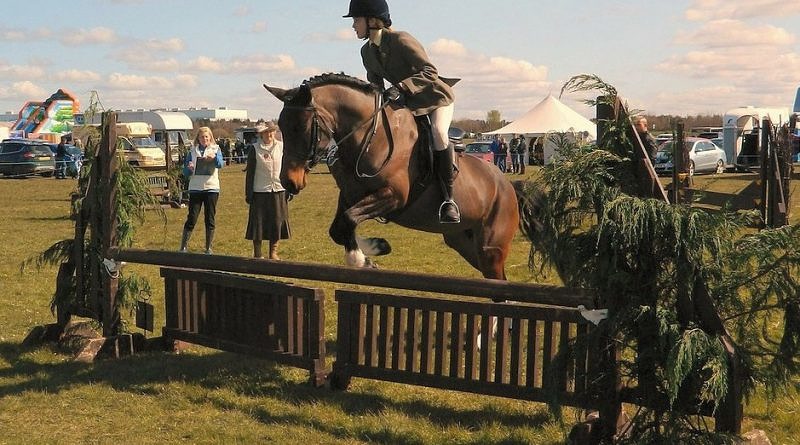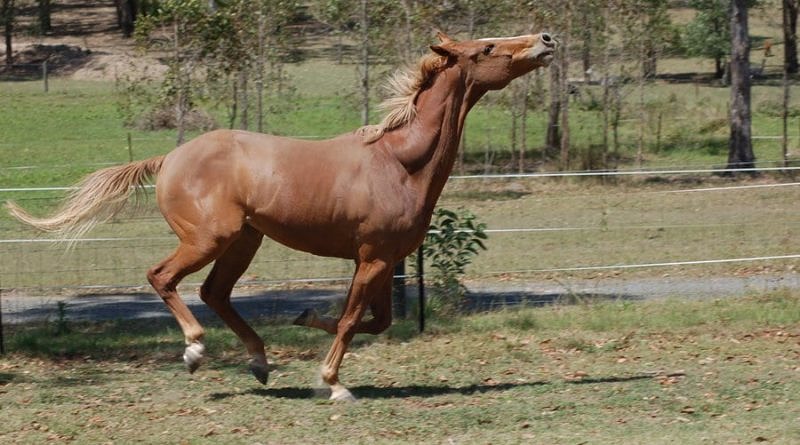Dressage for Jumping – Part 1
Dressage basics are important for any jumping discipline. Here are a few ways in which exercises on the flat can help your horse perform better over fences.
We are all taught that flatwork is a very important part of training horses to be good jumpers but many riders with an interest in jumping lack a passion for this and sometimes struggle to ‘see the point’. Understanding how work on the flat contributes to success over fences can help make dressage (which really shouldn’t be stressage when done right!) more engaging, and give the rider a greater sense of purpose. So here are three ways in which schooling on the flat can actually help to improve your jumping as well!
Nurturing rhythm and relaxation
Rhythm and relaxation are key concepts in dressage. Without these basic elements, it is incredibly difficult to make any long-term progress. This means that even though it can seem ‘boring’ at first, dedicating time to establishing these basics actually leads to better results and faster progress. Unfortunately, a lot of riders learn this the hard way! This is also true for jumping where having these components established and solid can pave the way for so much more!
A relaxed horse that travels with a regular, clear gait is a pleasure to ride. If you find yourself struggling to adjust your horse between fences or your horse tends to rush at the next fence, these may be the crucial components that are missing. It may be tempting to put a bandaid on these problems and keep on ploughing through but if left unaddressed, this gap in training can lead to every ride being a fight, with sloppy jumping and refusals. A gutsy rider may still be able to cope with this and many do – but why not set your sights higher? Instead of ‘making do’ and living by the seat of your pants, imagine if every round felt like a cooperative endeavour between you and your equine partner.
Getting your horse on the aids
Working on suppleness and connection on the flat can really improve a horse’s adjustability into a fence. A horse that is on the aids and responsive can quickly be made to lengthen or shorten their stride so that the rider can decide on a perfect spot for take-off. Simple exercises on the flat to get the horse on the bit and in front of the leg can make a big difference when it comes time to jump a course!
A lot of people struggle with horses that are either ‘too fast’ or ‘too slow’. Often these are issues that arise because the horse is confused about the meaning of the rider’s cues due to inconsistency or a failure to properly release pressure in response to the horse doing the right thing. Over time, horses can even start to block out the rider’s ineffective aids and become ‘dead to the leg’ or ‘hard in the mouth’. Careful schooling on the flat, guided by a knowledgeable instructor, can help restore sensitivity and re-teach crucial responses. No one wants to fight their horse for every stride! Putting in the work on the flat will set you up for success.
Working correctly
The purpose of dressage is to train the horse to carry a rider in the best way possible – for both their health and our success as a partnership. But this requires a great deal of gradual development of both horse and rider to achieve.
What makes this even more complicated is that horses – and riders – can ‘cheat’. We can often compensate for weaknesses, a lack of flexibility, strength, or balance, by performing a movement or exercise in a subtly different, easier way.
For example, say I decide I want to build my upper arm and core strength by doing pull-ups. I start trying to do a certain number every day but I do them by swinging my legs in order to provide momentum for an upwards push. I am still doing the pull-ups… But I’m doing them in a way that doesn’t force my arms to really work as hard as if I did them ‘properly’. Over time, my arms will still get stronger but not as quickly or to the same extent as they would if I really put the effort in from the start. Now imagine that I told someone that I can do pull-ups. They might expect that I can therefore also pull myself up and over a wall. But if I actually tried to do that, I wouldn’t be able to because I wouldn’t have space to swing my legs!
The same scenario occurs when training horses (and riders). Horses and riders ‘cheat’ and find ways to reduce the effort they need to put in to accomplish something. Often, the rider isn’t even aware that they are doing this. But when things get more difficult – especially with increasing technical difficulty or where there’s a real need for speed and manoeuvrability, the easy way is no longer good enough!
Continue to part 2 to read more about using dressage to improve your jumping!







